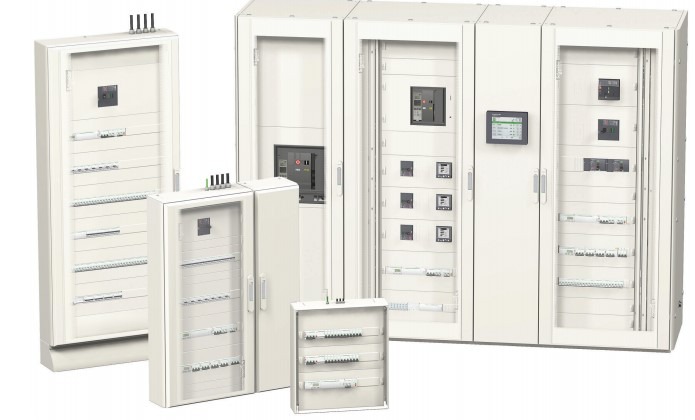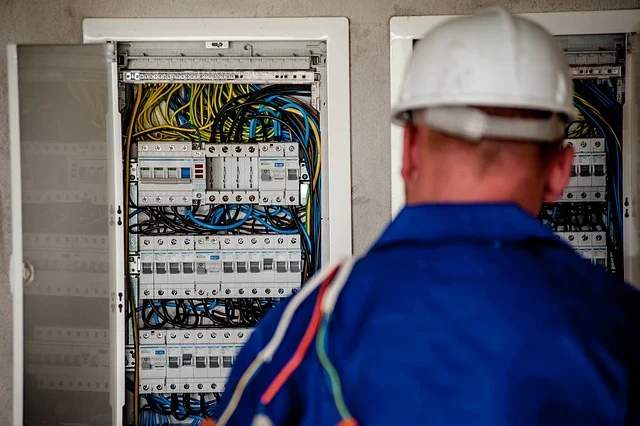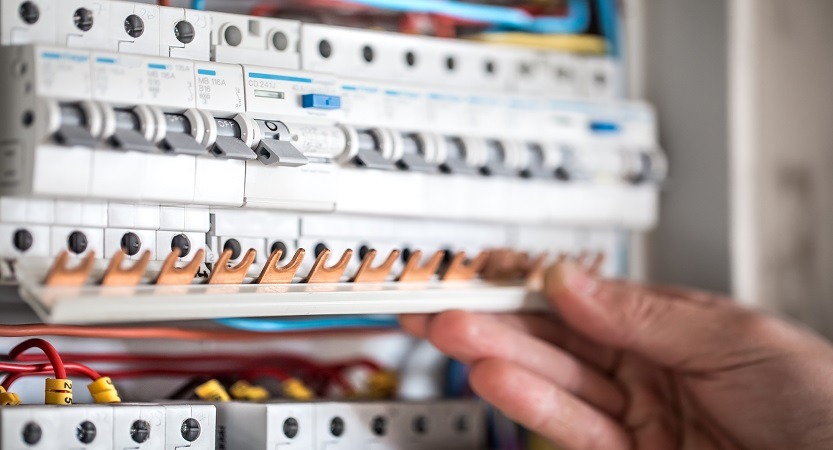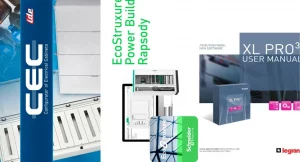Introduction to electrical panels
Did you know that the electrical panel is one of the most important components in your home? Although invisible to the naked eye, it plays a crucial role in supplying and distributing electricity throughout your home. In this definitive guide, you’ll discover everything you need to know about the electrical panel and how to understand it simply.
As we explore the ins and outs of the electrical panel, you’ll learn about its different parts, functions and how to identify common problems. We’ll also give you practical tips on how to keep it in good condition and how to upgrade it if necessary. Whether you’re looking for information to troubleshoot an electrical problem or simply want to expand your knowledge, this guide is your complete and trusted resource.
Our goal is to help you understand how the electrical panel works and how to get the most out of this essential element of your home. Get ready to become an electrical panel expert and take your electrical knowledge to the next level!
Without further ado, let’s get started!
Function and importance of electrical panels

Electrical panels, also known as distribution panels or circuit boards, are the foundation of your home’s electrical system. Their main function is to receive electrical power from the utility company and distribute it to the different circuits in your home. Electrical panels are designed to protect your devices and appliances, as well as to prevent short circuits and overloads.
An electrical panel consists of several essential components, such as circuit breakers, fuses, bus bars, power cords and more. Each of these elements plays an important role in the operation of the electrical panel.
How does an electrical panel work?
Most buildings, industries, communities and homes have at least one main electrical distribution panel. This will be in charge of receiving the electrical supply from the company’s network or from a general switchboard located upstream of the system, and will distribute the electrical supply to more auxiliary panels or final circuits connected to this cabinet. The above mentioned usually occurs very frequently in industrial installations and large stores. In short, it is the electrical guardian of your home and business.

If you have something connected to the power supply, I assure you that it comes from an electrical panel.
Components of an electrical panel
Although each electrical panel is different and is adapted to the particular installation and assembly needs of each project, there are components that are common to all design variables.
Electrical Protection and Switching Elements:
⚡Magnetic Thermal Protection Switches(IGA, PIA’s).
Overvoltage Protection (DST).
⚡ Differential Protection Switches(ID).
⚡Load Switch Disconnectors.
⚡ Differential Relays and Leakage Current Detectors (Toroidal).
⚡Emergency tripping mushrooms.
⚡ Timers, Clocks and Timers.
⚡Guardamotors and Contactors.
⚡Power meters and network analyzers.
Mounting Accessories:
👨🔧Borneros or phase distributors.
👨🔧Bornas for connection of outputs and inputs.
👨🔧Canal slotted for flanging and wiring.
👨🔧Pletinas rigid or flexible copper.

All these elements mentioned above are quite common in electrical panels and can be found in many variants, categories and power ratings.
Different types of switchboards
Electrical panels usually come in many different categories depending on the application for which they were created. We can find cabinets for houses, garages, swimming pools, industries, transformation centers, etc… In each of these applications the same technical characteristics are not taken into account for their selection and it is necessary to include all the specific requirements of the project for their correct sizing, selection and subsequent assembly and commissioning on site.
It should also be added that there are several types of electrical panels available on the market, and the choice of the right type depends on the specific electrical needs of your home. The most common electrical panels are fuse panels and circuit breaker panels. Fuse panels use fuses to protect electrical circuits. When an overload occurs, the fuse blows and must be replaced. On the other hand, circuit breaker panels use circuit breakers that automatically shut off when they detect an overload or short circuit. These breakers can be easily reset once the problem is fixed.

But we have to mention that there are characteristics and types of cabinets based on their installation that are also common and basic in each of the enclosures, which can be defined before delving into their selection. Within these characteristics we find:
Common design features of electrical panels |
Types of electrical panels according to their installation |
|
|
|
|
|
|
Understanding the capacity of an electrical panel and load calculation
The capacity of an electrical panel refers to the maximum amount of electricity it can safely supply. It is important to understand the capacity of your electrical panel to ensure that there is no overload and that it can handle the electrical demand of your home.
Load calculation is the process of determining the amount of electrical power needed in your home. This is based on the devices and appliances you use, as well as your energy consumption habits. Calculating the proper load will help you avoid overloading the electrical panel and prevent electrical problems.

Common Problems and Troubleshooting Tips for Electrical Panels
Over time, you may encounter common problems with your electrical panel. These problems may include circuit breakers that constantly go out, fuses that blow frequently, or circuits that don’t work properly. Here are some tips for troubleshooting these problems:
1. check circuit breakers: make sure circuit breakers are properly wired and not damaged. If a breaker is constantly shutting off, there may be an overload in the circuit.
2. Replace fuses: If fuses blow frequently, they need to be replaced. Be sure to use the proper fuse for each circuit and avoid overloading them.
3. Check connections: Make sure all connections in the electrical panel are tight and secure. Loose connections can cause electrical problems.
Remember that it is always best to enlist the help of a professional electrician if you are not comfortable troubleshooting electrical problems on your own.
Upgrading or replacing an electrical panel
In some cases, it may be necessary to upgrade or replace an electrical panel. This may be due to a number of reasons, such as the need to increase the capacity of the panel to handle increased electrical demand, or if the panel is old and does not meet current safety standards.
Upgrading or replacing an electrical panel should be done by a professional electrician. They will evaluate your electrical needs and recommend the best solution for your home.
Safety tips for electrical panels
Safety is of utmost importance when it comes to electrical panels. Here are some tips to keep your electrical panel safe:
1. Don’t overload circuits: Avoid connecting too many devices on a single circuit. Distribute the electrical load properly to avoid overloading.
2. Don’t ignore electrical problems: If you notice problems such as sparking, buzzing or circuits that keep going out, seek the help of a professional electrician immediately.
Keep the panel clean and free of obstructions: Make sure there are no objects around the electrical panel that could obstruct access or cause electrical problems.

Hiring a professional for the installation or maintenance of an electrical panel.
When it comes to electrical panels, it is always best to enlist the help of a professional electrician. These experts have the knowledge and experience necessary to install, maintain and troubleshoot electrical panels safely and efficiently.
Whether you need to install a new electrical panel, perform an upgrade or simply perform regular maintenance, hiring a professional electrician will give you peace of mind and ensure that the job is done right.
How much does an electrical panel cost?
Although there are as many prices as cabinets available to choose from, this makes it very difficult to give a price that is even close to reality, as there are several variables that influence any standardization of manufacturing and assembly rates. To make a valuation of an electrical panel it is necessary to calculate:
💲Material to be used: In this case from the enclosure or cabinet, all the main electrical material and mounting accessories.
💲Study or engineering: Many of the projects start from an idea and needs and it is essential that a registered engineer or architect makes a project for your acceptance. This process usually costs its considerable amount of money as well.
💲Hours of work: It is necessary to calculate the hours of work necessary for the manufacture of an electrical panel that add directly to the general computation of the budget.
Others: Then, if we count shipping, assembly and installation, it depends on who does it, but if it is ordered to a third party, this item will have to be added to the budget.
As you can see many economic variables influence this process and it is almost impossible, except for something specific, to give an objective assessment of an electrical panel.
Main manufacturers of Electrical Cabinets
There are many manufacturers of electrical panels worldwide, but we will mention below the ones that we consider, in our experience, to be the best, with the widest variety of products and most used in projects. If you have worked with any others that you think should appear in our list, let us know the name in the comments and the reason for your selection.
- Schneider Electric. View Catalog
- SIEMENS. See Catalog
- IDE Electric. See Catalog
- HAGER. See Catalog
- Rittal. View Rittal Catalog.
- ABB. View Catalogtarifa_920_web
In the list above you will be able to download quickly and free of charge the catalogs of each of these manufacturers. They are also available on their websites, but we thought it would be a good idea to save you the trouble of searching for them.
Conclusion and Final Thoughts
The electrical panel is an essential component of your home and understanding how it works will help you maintain a safe and reliable electrical supply. Throughout this guide, we have explored the different aspects of the electrical panel, from its function and components to how to troubleshoot common problems and keep it in good condition.
Remember to always prioritize safety and seek the help of a professional electrician when necessary. With this knowledge, you are well on your way to becoming an electrical panel expert and taking control of your home electrical system. Keep learning and taking steps to keep your home safe and energy efficient!
With this article I wanted to introduce the topic of electrical panels in our catalog of publications and topics to discuss, because as I mentioned at the beginning is a very interesting and demanded by our Community.
If you liked this article be sure to let me know with a like. I read all comments, so leave me your opinion or any doubts you may have after reading this article.
See you next time!





It really interests me to read such articles, thanks for sharing Blogs like yours really helps me learn more day by day.
Thanks to you James! I really apreciate your comment!👍
It’s interesting to know about electrical cabinets and how each structure requires a specific type. We decided to build our house from scratch last year, and we’re looking for electrical supplies to design our system, so my wife and I think your article will help us. Thank you for describing electrical panels and how they protect our house’s electrical panel.
Hi Eli, I am delighted to read that my article has helped you to define and clarify the electrical material you need to renovate your home. Regards